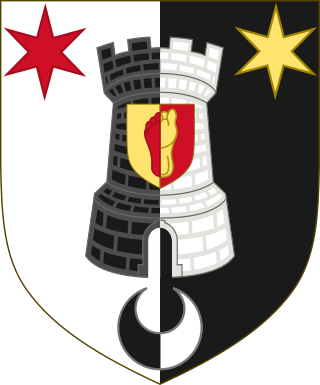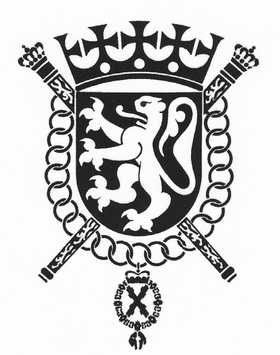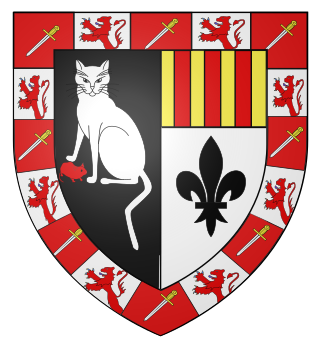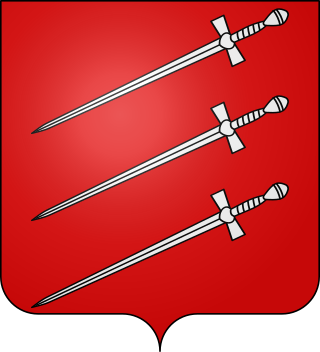
Étienne Constantin, Baron de Gerlache was a lawyer and politician in the United Kingdom of the Netherlands, and later became in 1831 the first prime minister of the newly founded Belgian state.

The Van Renesse family is an old Dutch aristocratic family that stems from the town of Renesse in Zeeland. The current Belgian branch resides in 's Herenelderen Castle since 1540.

The Seven Noble Houses of Brussels were the seven families or clans whose descendants formed the patrician class and urban aristocracy of Brussels, Belgium.

The Carpentier family is a noble family of French origins. One of its branches moved to the kingdoms of England and Scotland in the 15th century. Another branch, the Carpentier de Changy family, has been part of the Belgian nobility since 1892.

The House of Lannoy is the name of an old and important Belgian noble family that takes its name from the town of Lannoy in northern France. The name comes from l'Annoy, which means 'the alderwood' in Picard French of Flanders.

The Parthon de Von family stems from the historical province of Berry, France. Its documented ancestry dates back to 1575 and distinguished itself in administration, justice, and diplomacy.

The House of Spoelberch is an old Belgian noble house, they are titled Viscount de Spoelberch. The family is legally recognised as being part of the nobility of the Belgian kingdom.
Joseph Norbert Leon François Marie Ghislain "José" Anne de Molina was a Belgian magistrate, heraldist, and historian.
Events in the year 1844 in Belgium.

The Van Dievoetfamily is a Belgian family originating from the Duchy of Brabant. It descends from the Seven Lineages of Brussels and its members have been bourgeois (freemen) of that city since the 1600s. It formed, at the end of the 17th century, a now extinct Parisian branch which used the name Vandive.
Events in the year 1850 in Belgium.

The Royal Belgian Genealogical and Heraldic Office is a private genealogical and heraldic society in Belgium. It was founded in 1942 as an ASBL and has over a thousand members interested in genealogy and heraldry. While it publishes exclusively in the French language, it covers all regions of Belgium.
Events in the year 1849 in Belgium.

Belgian heraldry is the form of coats of arms and other heraldic bearings and insignia used in the Kingdom of Belgium and the Belgian colonial empire but also in the historical territories that make up modern-day Belgium. Today, coats of arms in Belgium are regulated and granted by different bodies depending on the nature, status, and location of the armiger.

The de Muyser Lantwyck family is an old Belgian family dating back to the beginning of the 15th century, tracing its roots to Jean Moyser, alderman of Vaelbeek, who held lands in Héverlé in 1451, censier of the Groenendael Priory, lord holding the lands and manor of Cockelberg by lease dated 19 June 1438, husband of Aleyde Crabbé.

The Poot family is a family that was admitted to the bourgeoisie of Brussels and from 1753 was registered among the Seven Noble Houses of Brussels.
Félix Victor Goethals (1798–1872) was a Belgian genealogist and librarian.
The Council of Nobility offers counsel to the King of the Belgians regarding all matters pertaining to the Kingdom's nobility.
Conrad-Albert-Charles d'Ursel, 1st Duke d'Ursel and Hoboken was a Dutch nobleman and general.

The House of Aspremont-Lynden is the name of an important Belgian noble family, which might have originated from the House of Lynden, part of the Dutch nobility. Due to their properties and intermarriages, the family also became part of the German nobility.















